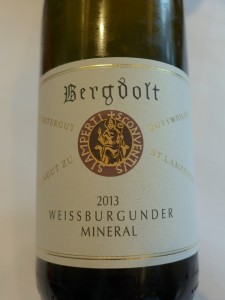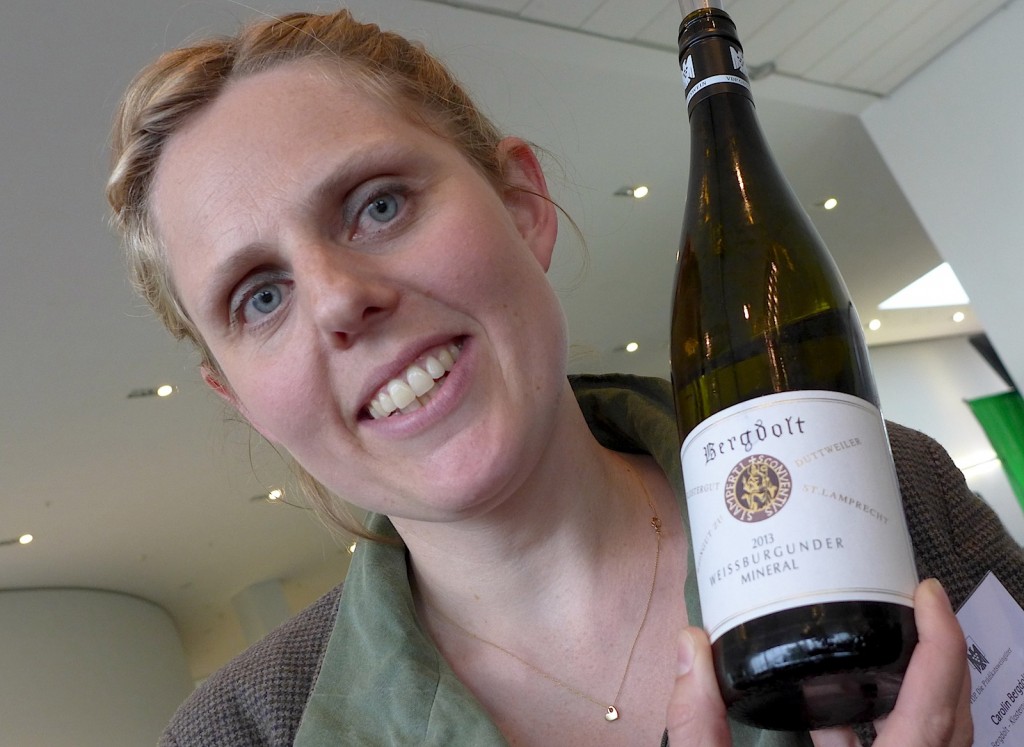Yes, sometimes it’s frustrating for me when bad internet reception delays a new posting going online, as it did yesterday at Düsseldorf Airport just before I jumped on my flight to New York Wine City (NYWC). However, the fact is that this blog is not a news site, rather a collection of what American journalists used to call “think pieces”. For thoughts that go way beyond the bustle of daily activity in NYWC and the Big Wide Wine World (BWWW) there really isn’t the same urgency to get the story out there. Then the important thing is that the thoughts are followed through in a way that gets to the bottom of what’s happening. I hope that that’s the case with the below.
I often get the comment from people in NYWC and in the BWWW that the title of my forthcoming book BEST WHITE WINE ON EARTH – The Riesling Story (Stewart, Tabori & Chang, from Mid-June) is a declaration of war on the wines of other white grape varieties, or at least a statement that seeks to exclude them. This is an understandable misunderstanding, because the people making it haven’t been able to read my book yet. As great and longstanding as my enthusiasm for Riesling is, I see it as in peaceful coexistence with other grape varieties everywhere it’s grown. For example, in Great Southern/Western Australia it flourishes next to Shiraz (Syrah), in the Wachau/Austria next to Grüner Veltliner and in the Rheingau next to Spätburgunder (Pinot Noir). It is not in competition with those grape varieties in any of those place. In all those places, rather Riesling complements them, sometimes being statistically more dominant than them, sometimes inferior to them in terms of vineyard area planted. However, I can already hear some voices calling out, “well, so what?”
 Pictured above is Carolin Bergdolt, the winemaker of the Bergolt (St. Lamprecht) estate in Duttweiler close to Neusatdt/Pfalz. Following in the footsteps of her father Rainer she produces some of the finest dry Weissburgunder (Pinot Blanc) in the world. The bottle she is holding is her 2013 Weissburgunder “Mineral”, a sleek, extremely lively and intensely mineral-flavored wine. This name is highly reminiscent of the dry Riesling “Mineral” from Emrich-Schönleber in Monzingen/Nahe, of which the 2012 was one of the stunning moderately-priced wines of that vintage in Germany. And, of course, a lot of other German Rieslings are named after geological formations, which certainly strongly imply that they possess a mineral character. Here we have a perfect example of how Riesling has become a source of inspiration for the wines of other grape varieties in Germany. It’s important to note that this wine is not a Riesling-copy (something which some other producers offer), but has the fresh nuts, pear and citrus aromas that I find prototypic for Weissburgunder and the more moderate acidity typical of this grape’s wines. This positive use of Riesling inspiration for other wines will surely become much more common and important during the years to come and not just in Germany. It is a sure sign that Riesling is now being accepted as an inherently positive phenomenon by consumers, rather than being viewed with a vague and irrational skepticism, as was long the case.
Pictured above is Carolin Bergdolt, the winemaker of the Bergolt (St. Lamprecht) estate in Duttweiler close to Neusatdt/Pfalz. Following in the footsteps of her father Rainer she produces some of the finest dry Weissburgunder (Pinot Blanc) in the world. The bottle she is holding is her 2013 Weissburgunder “Mineral”, a sleek, extremely lively and intensely mineral-flavored wine. This name is highly reminiscent of the dry Riesling “Mineral” from Emrich-Schönleber in Monzingen/Nahe, of which the 2012 was one of the stunning moderately-priced wines of that vintage in Germany. And, of course, a lot of other German Rieslings are named after geological formations, which certainly strongly imply that they possess a mineral character. Here we have a perfect example of how Riesling has become a source of inspiration for the wines of other grape varieties in Germany. It’s important to note that this wine is not a Riesling-copy (something which some other producers offer), but has the fresh nuts, pear and citrus aromas that I find prototypic for Weissburgunder and the more moderate acidity typical of this grape’s wines. This positive use of Riesling inspiration for other wines will surely become much more common and important during the years to come and not just in Germany. It is a sure sign that Riesling is now being accepted as an inherently positive phenomenon by consumers, rather than being viewed with a vague and irrational skepticism, as was long the case.
The picture was taken at the Mainzer Weinbörse on Monday, April 28th. The 2013 Weissburgunder “Mineral” from Bergdolt wasn’t the best wine I tasted at that event, although Carolin Bergdolt’s richer, more sauce and complex 2013 Mandelberg Weissburgunder was certainly a candidate for that title. If you insist on regarding this story as “news”, then I’m definitely way to late in publicizing it. However, if you want to understand what’s going on in the BWWW and you’re willing to think things over in order to do so, then this is a very timely posting. I hope that you’re on my side on this thing. If not, then please let me know!


![120114_riesling_global_RZ [1600x1200]](http://www.stuartpigott.de/wp-content/uploads/2014/04/120114_riesling_global_RZ-1600x120010.jpg)